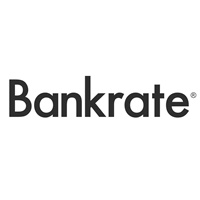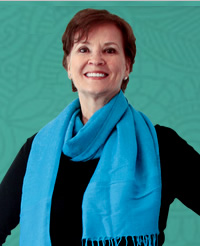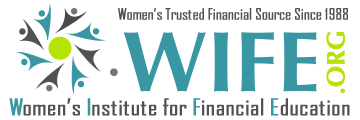 WIFE.org Co-Founder Candace Bahr was featured in an article by Bankrate
WIFE.org Co-Founder Candace Bahr was featured in an article by Bankrate
You can read the complete article here.
Women’s Equality Day is Aug. 26., but many women are still being paid less than men.
The Institute for Women’s Policy Research (IWPR) reports that women are paid 80.5 cents on the dollar compared to men. The inequality is even greater among Latinas and black women.
How does that add up? IWPR estimates that the wage gap will cost millennial women, with the same education and job opportunities as their male counterparts, $1,066,721 over their lifetime.
That money missed out could be funneled into one of the most crucial aspects of financial wellbeing: retirement funds. And while 61 percent of Americans are gambling their futures by not knowing how much money they’ll need for retirement, unequal pay puts women even farther behind.
How do women’s retirement funds compare to men’s?
The National Institute on Retirement Security reports that women at retirement age are 80 percent more likely than men to be in poverty.
The same report states that 401(k)-type retirement accounts have balances 34 percent less than men’s, and they’re 3 percent less likely to be eligible for their employers’ retirement plans than men are.
Aside from unequal pay, factors like longer lifespans and leaving the workforce to care for children or aging parents puts the balances women’s retirement funds at a disadvantage, also according to the NIRS.
It’s still possible for women to overcome these retirement barriers. Women-focused organizations offer tailored investing products and advice. With investment-planning algorithms that take into account the gender wage gap or messaging that reaches women on a personal level, they’re here to help.
Here are five resources that can help women catch up their retirement accounts.
1. Ellevest helps women create personalized investment strategies
For women seeking help creating investing plans, Ellevest is one of the most prominent digital investment advisory firms for women today.
Sallie Krawcheck, former CEO of Merrill Lynch, Smith Barney and Citi Private, founded Ellevest in 2016. She claims that the gender wage gap has cost women big chunks of change when it comes to their retirements — and that women are already empowered to invest, but need help tapping into it.
To achieve that, Ellevest uses an algorithm tailored to women’s incomes and life cycles. By accounting for gender-specific salary curves and goal targets, Ellevest claims it can help women achieve the funds needed to support their longer lifespan.
The firm offers a free investment plan with no minimum balance and a 0.25% annual fee. Users can customize plans based on specific wants or needs, like desired investment return and flexible monthly contributions.
For women looking for guidance with investing $1 million or more, there is a paid premium service available.
2. She Spends makes personal finance more approachable
Based on a weekly newsletter and website, She Spends has one goal in mind: giving women actionable tools to close the wage, investing and board seat gaps.
To achieve this, the platform creates conversations with its community. She Spends is not only a website, but is also a newsletter with 1,500 active subscribers and a private Facebook community of 900+ plus women and nonbinary people.
“We wanted to create a safe space where women could come and get financial information that meets them where they are,” says founder Alicia McElhaney. “We’re here to make money and personal finance approachable.”
That approachability has encouraged members to ask questions and provide their own input and personal experiences. Posts in the Facebook community group include questions about how to pick a robo advisors to the best investing books to read.
Additionally, She Spends has an affiliate program with Ellevest to bridge the information gap between its community members at the firm.
3. Savvy Ladies offers webinars for the busy
Since 2003, Savvy Ladies claims to have helped over 15,000 women “make proactive choices about their finances, and lead more rewarding lives.” The mission of the organization goes beyond basic financial literacy; it aims to strengthen families, enhance communities and change society.
Savvy Ladies is free and offers a wide variety of resources ranging from weekly 30-minute webinars to a monthly newsletter and blog. It also offers a helpline, connecting women with certified financial planners for one-on-one consultations based on their needs.
An entire section of Savvy Ladies’ website is dedicated to retirement planning. It features a handful of free webinars, including an explainer on annuities and the three financial fears women have about their futures, along with tips to overcome them.
For those searching for how-to guides on their investment and retirement accounts, there are over a dozen blog posts covering Social Security, maximizing IRAs and more.
4. Women’s Institute for Financial Education (WIFE) builds strong financial literacy foundations
 Founded by Candace Bahr, former wealth management partner, and Ginita Wall, CPA, CFP, CDFA, WIFE is the oldest non-profit organization that provides financial education strictly for women.
Founded by Candace Bahr, former wealth management partner, and Ginita Wall, CPA, CFP, CDFA, WIFE is the oldest non-profit organization that provides financial education strictly for women.
Bahr founded the nonprofit in 1988 after recognizing the growing need of clients becoming financially independent due to divorce of death of their husbands.
Today, the organization offers an extensive collection of information in the format of articles, workshops, support clubs and money challenges. Subjects include investing, navigating the finances of divorce and widowhood, estate planning, insurance and more.
WIFE doesn’t offer hands-on help with investment portfolios, but can be best used as a resource to build a strong foundation of financial and investment literacy.
5. Women’s Institute for a Secure Retirement (WISER) offers nationwide research and workshops
WISER aims to help women secure retirement income through research, workshops and partnerships. WISER has worked on partnerships with organizations focused on Latinas, rural retirement, nurses and more.
Since founded, government agencies have backed WISER and aided in developing the National Resource Center on Women and Retirement Planning. To date, the Center has held over 20,000 workshops and trainings on topics such as Social Security, pensions and retirements plans and more.
For those who can’t attend a training or workshop in person, the organization offers a collection of saving and investing fact sheets, as well as an investment calculator and “future paycheck” calculator.

Pingback: 5 Investing Resources For Women | The Next Chapter